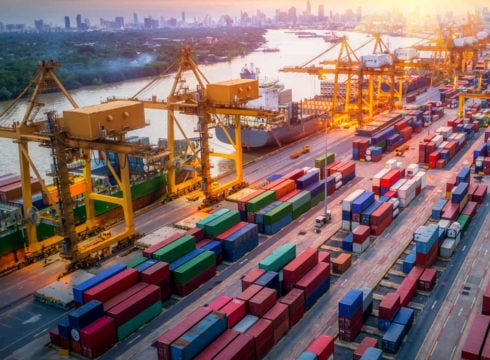SUMMARY
India currently spends about 14% of its GDP on logistics
Union commerce minister Piyush Goyal wants to bring this cost down to 9%
The policy is being worked on by the Department of Logistics
Inc42 Daily Brief
Stay Ahead With Daily News & Analysis on India’s Tech & Startup Economy
The Indian logistics industry has been riding on the coattails of the booming ecommerce market and offline-to-online movement of retail market as well. But it has also been an expensive affair. India spends about 14% of its annual gross domestic product (GDP) on logistics.
The Union Minister of Commerce and Industry and Railways, Piyush Goyal, is targeting to bring down this to 9% of the GDP by 2022 with the help of draft National Logistics Policy. The announcement was made on June 27 (Thursday), after the minister reviewed the policy and announced a plan to make India a logistics hub.
The policy is being worked on by the Department of Logistics under the Ministry of Commerce and Industry. The draft policy has been prepared in consultation with the Ministries of Railways, Road Transport and Highways, Shipping and Civil Aviation. Further, the government took in inputs from 46 Partnering Government Agencies (PGAs) for consideration in the draft policy.
Last year in June, then minister of Commerce and Industry and Civil Aviation, Suresh Prabhu, said that the government plans to come up with an integrated logistics policy to boost the sector. In February, the Ministry of Commerce had published the draft policy and opened the issue for public discussions.
The Commerce and Industry Ministry is formulating the logistics policy so that India’s trade competitiveness grows, more jobs are created, India’s performance in global rankings improves and paves the way for India to become a logistics hub.
What Is The Need Of A National Logistics Policy?
Indian logistics sector is currently valued at $160 Bn and is poised to hit $215 Bn by 2020. But it is highly defragmented and complex.
The system has more than 20 government agencies, 40 PGAs, 37 export promotion councils, 500 certifications, 10K commodities and 160 Bn market size. It also involves 12 Mn employment base, 200 shipping agencies, 36 logistics services, 129 ICDs, 168 CFSs, 50 IT ecosystems and banks and insurance agencies. Further, 81 authorities and 500 certificates are required for EXIM.
The Economic Survey 2017-18 showed that the Indian logistics sector provides livelihood to more than 22 Mn people and improving the sector will facilitate 10% decrease in indirect logistics cost leading to the growth of 5 to 8% in exports.
Key Points Of Draft National Logistics Policy
- The policy aims to inform, clarify, strengthen and prioritise the key objectives, and the governance framework for logistics in India
- Create a national logistics online marketplace to simplify trade documentation
- Incentivise logistics to make it more efficient
- Create a data and analytics center for monitoring key logistics metrics
- Create a center of excellence to drive innovation
- Create an Integrated National Logistics Action Plan for all logistics related development
- Envisages to create employment opportunities for 10 Mn -15 Mn people
- Set up National Council for Logistics, Apex inter-ministerial Committee, India Logistics Forum, and Empowered Task Force on logistics
The State Of Logistics In India
According to Inc42’s State of The Indian Startup Ecosystem 2018 Report, India had over 900 logistics startups as of November 2018. Between 2014 and 2018, these startups have raised over $1.4 Bn funding across 115 deals.
In a report, US-based commercial real estate services and investment firm, CBRE said the overall absorption in the logistics sector in 2018 touched 24 Mn sq ft with the majority of the demand concentrated in Mumbai (23%), Delhi-NCR and Bengaluru (19%), followed by Chennai and Hyderabad accounting for about 14% and 12% respectively.
A 2018 Deloitte-ASSOCHAM report said that multiple challenges of infrastructural deficiency, lack of integration amongst stakeholders, lack of skilled manpower and slow adoption of technology continue to weigh down the logistics industry.
Going forward, Minister Goyal has asked all the four Ministries and their departments must leverage existing infrastructure to support each other in the logistics chain. This will not only help in maximizing capacity utilization but also reduce costs, he added.
He also directed that whenever any new road, railway, airport and shipping port project is being considered the Logistics Department must be a part of the consultation process so that holistic planning will be possible, freight movement will be rationalised and passenger experience will improve.
Note: We at Inc42 take our ethics very seriously. More information about it can be found here.


